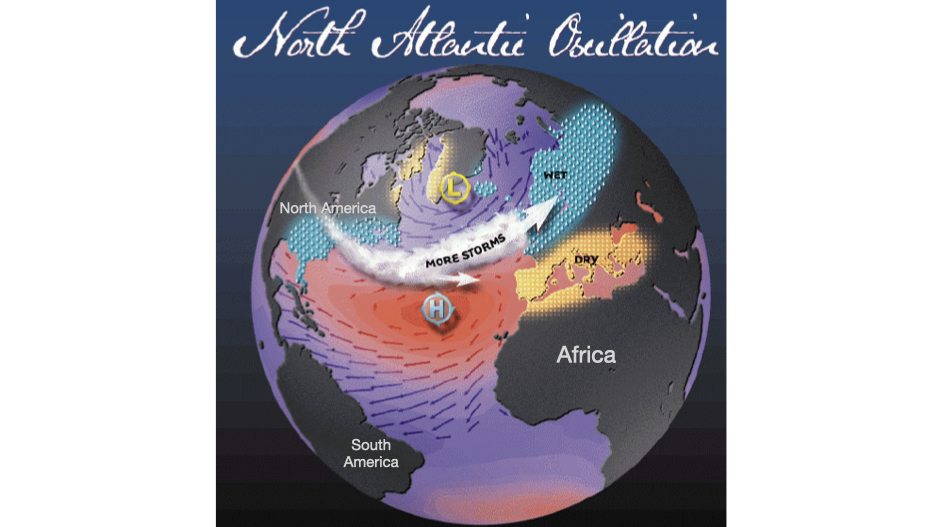The findings suggest that winters in Europe and in eastern US may get warmer and wetter
University of Miami Rosenstiel School of Marine & Atmospheric Science
A new study led by scientists at the University of Miami (UM) Rosenstiel School of Marine and Atmospheric Science provides evidence that humans are influencing wind and weather patterns across the eastern United States and western Europe by releasing CO2 and other pollutants into Earth's atmosphere.
In
the new paper, published in the journal npj Climate and Atmospheric
Science, the research team found that changes in the last 50 years to an
important weather phenomenon in the North Atlantic -- known as the North
Atlantic Oscillation -- can be traced back to human activities that impact the
climate system.
"Scientists have long understood that human actions are warming the planet," said the study's lead author Jeremy Klavans, a UM Rosenstiel School alumnus. "However, this human-induced signal on weather patterns is much harder to identify."
"In
this study, we show that humans are influencing patterns of weather and climate
over the Atlantic and that we may be able to use this information predict
changes in weather and climate up to a decade in advance," said Klavans.
The
North Atlantic Oscillation, the result of fluctuations in air pressure across
the Atlantic, affects weather by influencing the intensity and location of the
jet stream. This oscillation has a strong effect on winter weather in Europe,
Greenland, the northeastern U.S. and North Africa and the quality of crop
yields and productivity of fisheries in the North Atlantic.
The
researchers used multiple large climate model ensembles, compiled by
researchers at the National Center for Atmospheric Research, to predict the
North Atlantic Oscillation. The analysis consisted of 269 model runs, which is
over 14,000 simulated model years.
The
study, titled "NAO Predictability from External Forcing in the Late
Twentieth Century," was published on March 25 in the journal npj
Climate and Atmospheric Science. The study's authors include: Klavans, Amy
Clement and Lisa Murphy from the UM Rosenstiel School, and Mark Cane from
Columbia University's Lamont-Doherty Earth Observatory.
The
study was supported by the National Science Foundation (NSF) Climate and
Large-Scale Dynamics program (grant # AGS 1735245 and AGS 1650209), NSF Paleo
Perspectives on Climate Change program (grant # AGS 1703076) and NOAA's Climate
Variability and Predictability Program.
